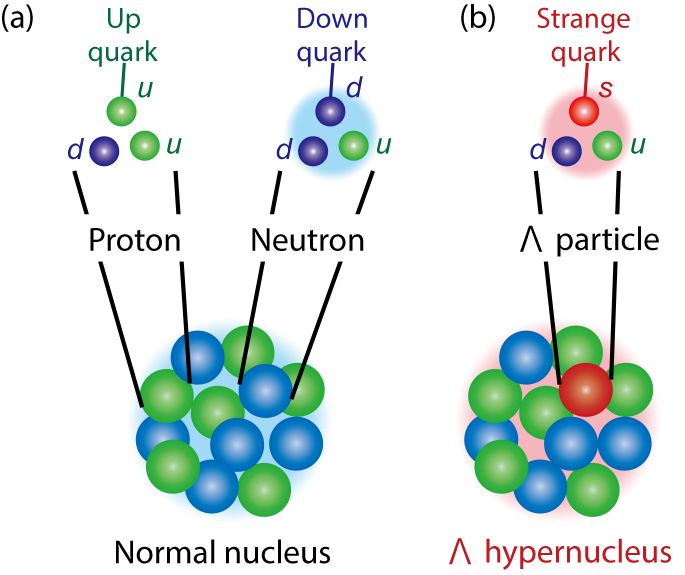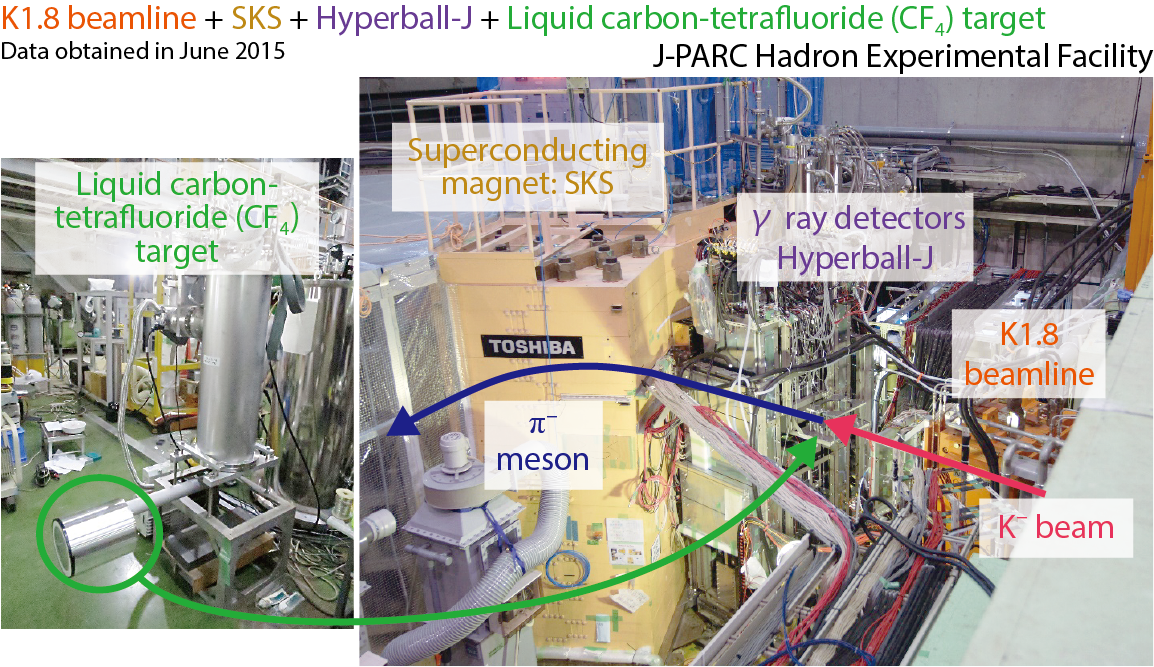
Fig.3-6 Normal nucleus and hypernucleus
(a) Normal nucleus composed of protons and neutrons only. (b) In hypernucleus, a Λ particle is added.

This Picture(139kB)
Fig.3-7 Experimental setup
Hypernucleus is produced by a reaction of K- beam provided from J-PARC with the carbon-tetrafluoride (CF4) target. At the same time, γ-rays emitted from the hypernucleus is detected by the γ-ray detectors (Hyperball-J) surrounding the target.

This Picture(139kB)
Fig.3-8 Obtained γ-ray spectrum
We succeeded to observe and identify four γ rays from florin-19-Λ (ΛF) hypernucleus. The first energy uncertainty is statistical and the second one is systematic. Several other peaks are also observed, but they are known to be from background sources other than ΛF as they are also seen even when the hypernucleus is not produced.
Normal nucleus is composed of two constituents, namely, protons and neutrons (Fig.3-6(a)). At the level of quark, both are made of two kinds of quarks, up and down, but it is known there are six kinds of quarks in the nature. Then, how nuclei are changed if we change an up/down quark to another kind, for example, strange quark? Such special nuclei are called hypernuclei. Among them, those with a Λ particle (Fig.3-6(b)) have been actively studied.
There are many motivations to study hypernuclei, one of which is for neutron stars. It is expected that Λ particles exist in neutron stars, and therefore it is necessary to study Λ hypernuclei to understand neutron stars. Since neutron star is a huge hypernucleus, it is desirable to study as heavy hypernuclei as possible, but studies so far are mostly limited to light hypernuclei due to technical reasons.
We succeeded to produce florin-19-Λ (ΛF) hypernucleus and observe light (γ rays) emitted from it at Hadron Experimental Facility of J-PARC (Fig.3-7). It is the heaviest hypernucleus of which γ rays are observed so far. The result (Fig.3-8) is consistent with theoretical calculations using data from helium-4-Λ (ΛHe) and lithium-7-Λ (ΛLi) hypernuclei we previously obtained. This indicates that heavier hypernuclei can be understood as well as light hypernuclei studied so far.
We will proceed such researches and investigate structures of even heavier hypernuclei. We expect to reveal the unknown internal structure of neutron stars by these studies.
This work was supported by the Japan Society for the Promotion of Science (JSPS) KAKENHI Grant-in-Aid for Scientific Research (A) (No.15H02079).
Reference
Yang, S. B., Tanida, K. et al., First Determination of the Level Structure of an sd-Shell Hypernucleus, ΛF, Physical Review Letters, vol.120, issue 13, 2018, p.132505–1–132505–5.
<Previous: 3-2 | Next: 3-4>


